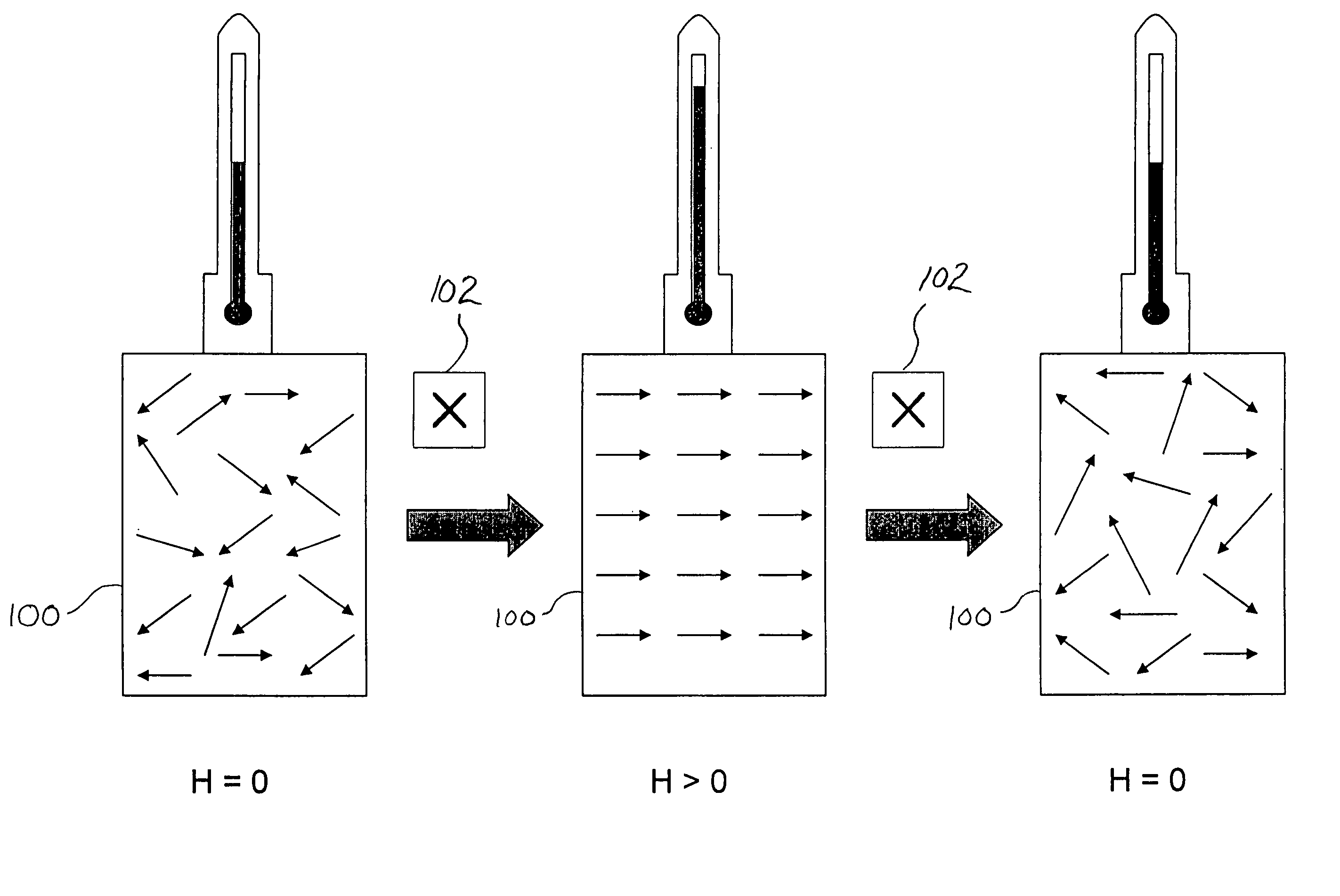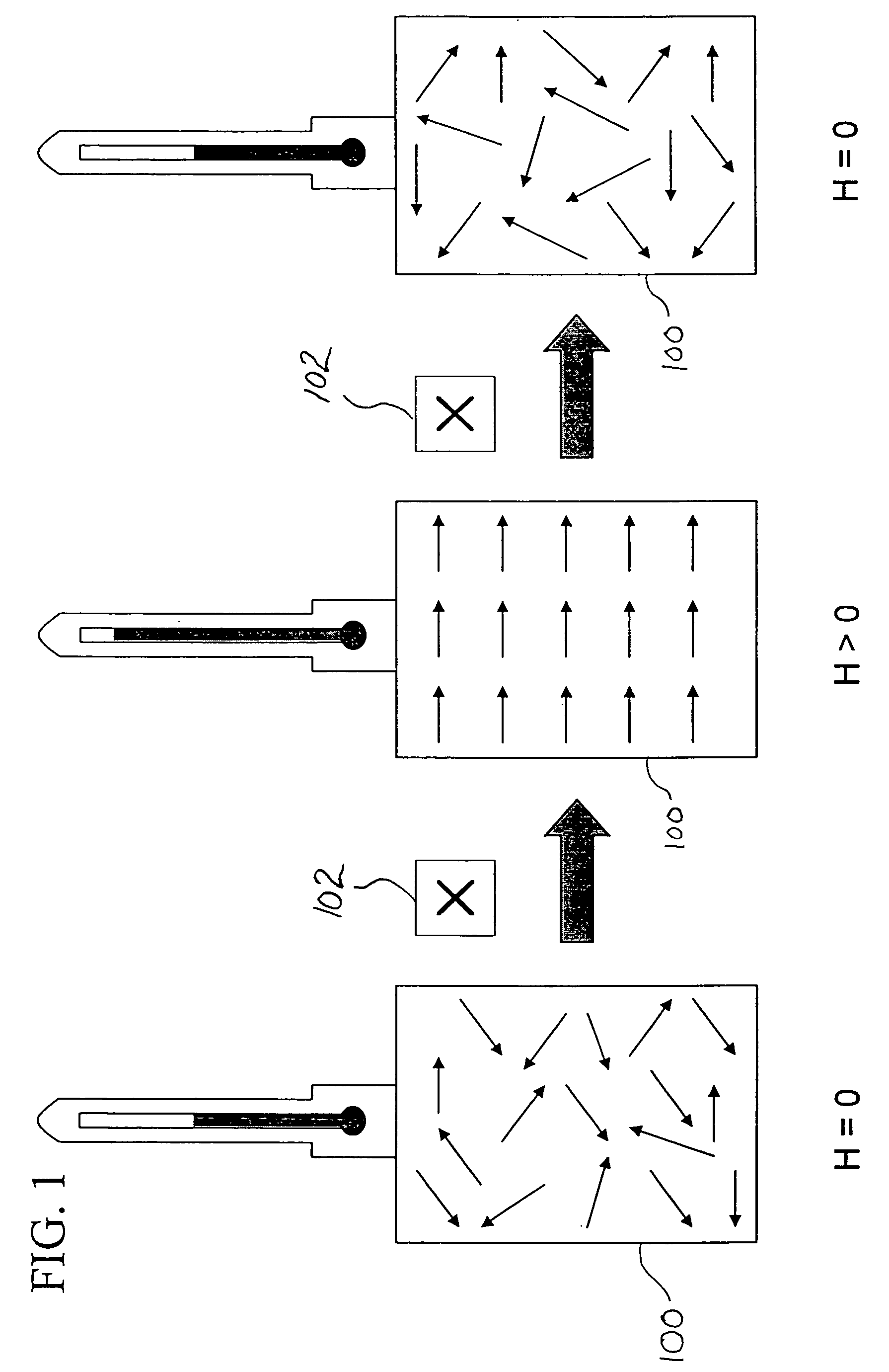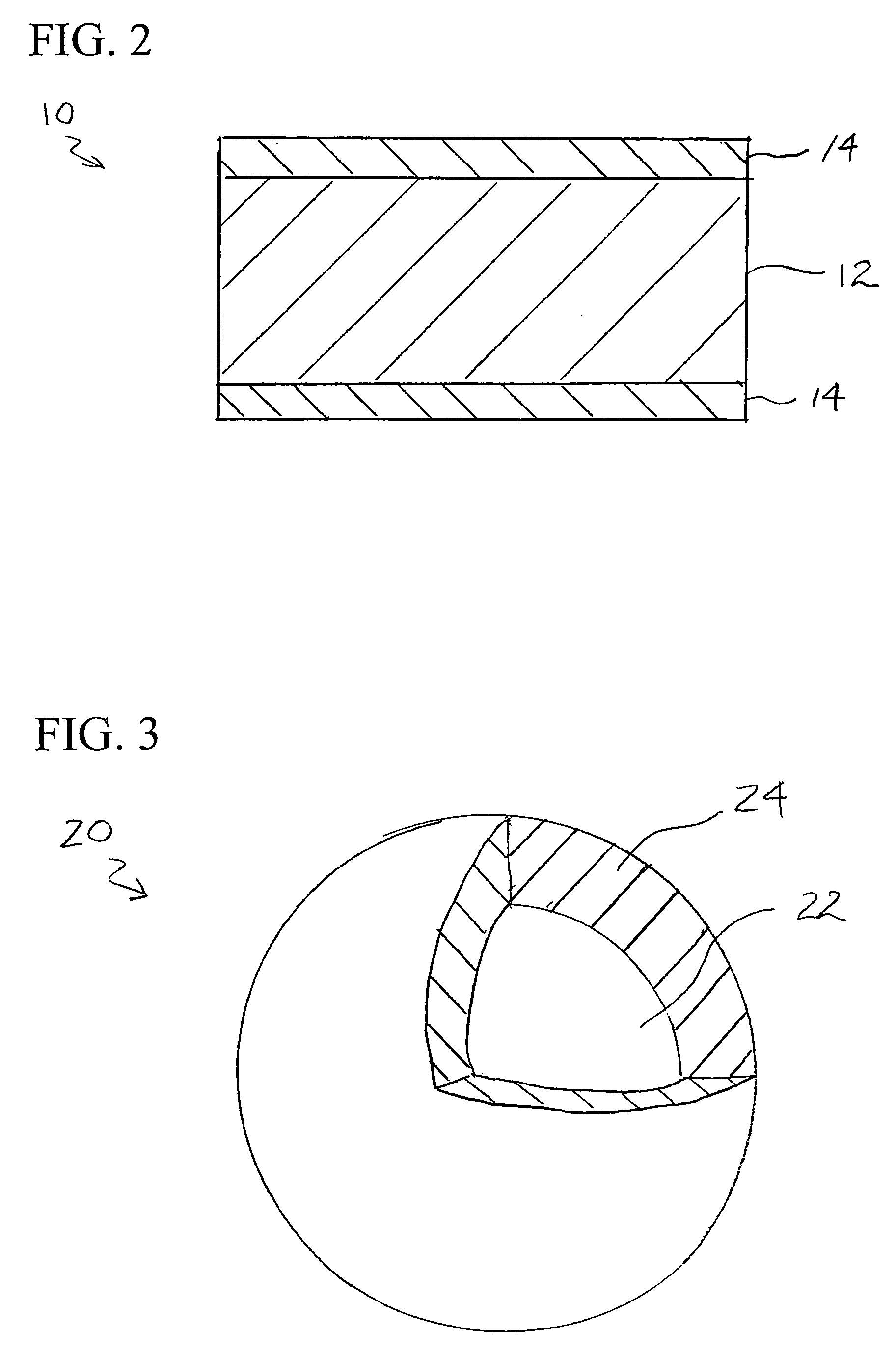Enhanced magnetocaloric effect material
a technology of enhanced magnetocaloric effect and material, which is applied in the field of materials, can solve the problems of significant challenges to the technological development of these systems, the magnitude of the magnetic field required to achieve the spectacular magnetocaloric effect is simply too high for wide-spread commercial, home and transportation use, and achieves the effect of reducing the critical field, effective amplifying the magnetic field, and avoiding adverse effects on the functionality of the material
- Summary
- Abstract
- Description
- Claims
- Application Information
AI Technical Summary
Benefits of technology
Problems solved by technology
Method used
Image
Examples
example
[0047]A Gd5Si1.5Ge2.5 sample core slice was prepared by conventional arc melting procedures using 99.9 percent Lunex rare earths and 99.999 percent silicon and germanium. The weight loss after melting was less than 1 percent and no subsequent heat treatment was carried out. Laboratory Cu—Kα x-ray diffraction studies revealed that the sample was well-crystallized and single-phase within the estimated limits of detection (5 vol %) and was isotropic, exhibiting no texture. Slices of Gd5Si1.5Ge2.5 of approximate thickness 0.6 mm were cut with a water-cooled slow-speed wire saw and the surfaces were carefully polished with fine emery paper. Iron (Fe) layers of nominal thicknesses 0.1 μm or 0.2 μm were applied to both surfaces of the core slices by a chemical vapor deposition technique, with very small volume ratios of Fe: Gd5Si1.5Ge2.5 of 0.03 vol % for the 0.1 μm layers and was 0.06 vol % for the 0.2 μm layers. During the Fe evaporation process the substrates were water-cooled and the c...
PUM
| Property | Measurement | Unit |
|---|---|---|
| magnetic transition temperature | aaaaa | aaaaa |
| thickness | aaaaa | aaaaa |
| thickness | aaaaa | aaaaa |
Abstract
Description
Claims
Application Information
 Login to View More
Login to View More - R&D
- Intellectual Property
- Life Sciences
- Materials
- Tech Scout
- Unparalleled Data Quality
- Higher Quality Content
- 60% Fewer Hallucinations
Browse by: Latest US Patents, China's latest patents, Technical Efficacy Thesaurus, Application Domain, Technology Topic, Popular Technical Reports.
© 2025 PatSnap. All rights reserved.Legal|Privacy policy|Modern Slavery Act Transparency Statement|Sitemap|About US| Contact US: help@patsnap.com



